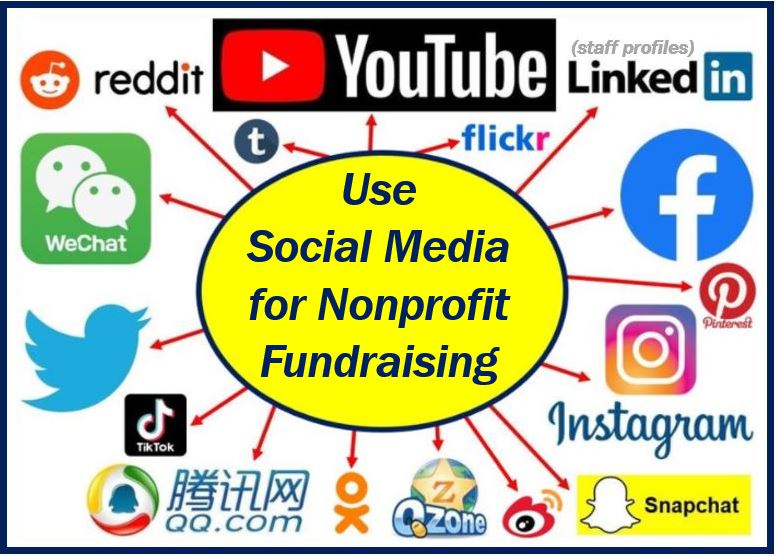In 2019, Facebook announced that charities (nonprofits) raised a total of £1.6bn through their platform.
What does that tell you?
That people are more than happy to give on social media.
But they aren’t just giving their money to strangers and people they don’t know. Facebook also cited that £803m out of the £1.6bn was raised through the Facebook birthday fundraising. That is, people gave money to folks they know or have good relationships with.

If you, too, would like to use social media to raise money for your nonprofit, the key takeaway is you have to build valuable relationships with people on social media.
And that’s where this article comes in.
How to use social media to raise funds for a nonprofit
-
Find and pick a network
The first step of the process is about finding out where your targets like to hang out the most.
As we know, if your targets are Gen Z (6 to 24 years old) and Millennials (25 to 40 years old), then you’re better off using channels like Instagram, Twitter, YouTube, and Facebook.
In that order.
The idea here is to consolidate all your nonprofit social media fundraising campaigns into the channel your targets use the most.
Note that the yardstick doesn’t have to be age groups only. It could be other demographic details like gender, location, interest, behavior, etc. You know your audience better, so it shouldn’t be hard figuring out where they visit the most.
-
Hire an expert social media manager
I’m sure you know the ability to convince people to open their wallets is a skill on its own. This is why you need to hire someone that has excellent social media management skills for any particular channel you’re choosing and who’s also good with promoting a nonprofit.
Don’t worry; a nonprofit staffing agency like Scionstaffing can help you find this person.
-
Tell your story
To turn ordinary fans, friends, and followers into potential donors, you need to tell your story every day in a heartfelt manner.
Already, these people like you and your brand because of what you do. But you need a heartfelt human-interest story to cut through the clutter and spark an emotional connection.
Common examples include:
- Sharing real-life stories of people your program has helped
- Sharing relatable case studies
- Daily strides and efforts that go on behind the scene
- How others are reacting and sponsoring the program
You have loads of tools on social media to showcase all these, from live videos to stories, feed posts to group posts, channel TV to reel updates, etc.
-
Leverage all social media fundraising tools
Take Facebook, for example; the tech giant has catered to the nonprofit community by building a set of fundraising tools and making it easy to collect donations from followers.
Any qualified nonprofit can add a donate button to its Page header and ads directing fans to a website of its choice. Nonprofits can also add donate buttons to posts and live videos to enable donations with only a few taps. Additionally, nonprofits can post the fundraiser thermometer on their social media accounts to make donation goals visible to donors. Donors will be eager to help your group raise money the more they see your fundraising thermometer.
Besides Facebook, platforms like Instagram also offer creators the chance to receive donations and tips from their fans when streaming live videos.
Say you’re streaming a live video showing a program you’re running in a local school. You can encourage fans and followers to support the program by using the Instagram live video donation badge to drop some bucks. As they do so, a heart icon will be displayed against their names. As others see these icons, they too will be encouraged to join.
YouTube offers this type of donation-driven feature, too.
-
Adopt the 80/20 rule and don’t always ask for money
Yes, you need money from your followers, but you don’t want to do it too often.
If you play your cards right, people will even reach out to donate to your cause voluntarily.
We recommend you use the 80/20 rule when it comes to using social media for nonprofit fundraising. That is, 20% of your posts should directly appeal for money, while the other 80% should be mainly about emotionally-driven content that educates your followers about your organization, cause, or area of expertise.
-
Use Influencers
Influencers are on all social networking sites, and they represent a great tool for nonprofit fundraising. And the reason is because their audience loves and trusts them.
If an influencer mentions a nonprofit to their fans and asks for a donation on behalf of the nonprofit, thousands of people will open their wallets and give something.
This is the extent of influence influencers have on their audiences.
Take your time to research the best influencers in your nonprofit niche, and reach out to them. Knowing that you’re a not-for-profit organization, the chances are high that these influencers won’t charge you, and even if they do, it won’t be the usual expensive rate.

